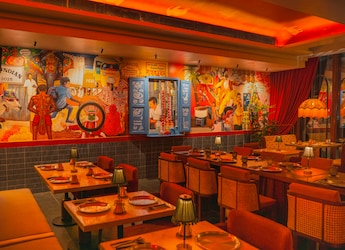Who doesn't love chocolate? There is just something about this beloved treat that is a wonder to one and all. And now that World Chocolate Day is just around the corner, this is the perfect time to take you through the entire journey of the world's favourite indulgence - chocolate! With a rich and fascinating voyage from the tropical farms where it is cultivated to the decadent bars we savour, this intricate and very complex process comprises multiple stages, each contributing to the final product's flavour and quality. Let's take you through a detailed journey of chocolate, from being a bean to a bar.
The Journey Of Chocolate From Bean To Bar: 10 Steps To Get Your Favourite Chocolate Bar:
Step 1. Cultivation
Chocolate begins its journey on the tropical cacao farms. The trees here produce pods that encase cacao beans, the primary ingredient of chocolate. Farmers working on these plantations carefully monitor their crops, ensuring the trees are healthy and productive.
Cacao Pods - Photo Credit: iStock
Also Read: World Chocolate Day 2023: 5 Dream Destinations For Chocolate Lovers
Step 2. Harvesting
Harvesting is labour-intensive and typically done by hand. Ripe pods are cut and split open to reveal the beans surrounded by a sweet pulp. The beans, along with the pulp, are scooped out and placed in large containers for the fermentation process to begin.
Pods Split Open - Photo Credit: iStock
Step 3. Fermentation
This is a critical step which typically lasts for five to seven days. During this phase, the beans are placed in wooden boxes and covered with banana leaves. Natural yeasts and bacteria break down the pulp, generating heat and initiating the complex chemical reactions that transform the beans.
Step 4. Drying
Once fermentation is complete, the beans are spread out in the sun to dry. This step reduces their moisture content and prevents mould growth, ensuring safe and proper storage and transportation of the beans. Farmers frequently turn the beans to ensure even drying and avoid overexposure to sunlight, which can damage them.
Drying Of The Beans - Photo Credit: iStock
Step 5. Roasting
After drying, the beans are cleaned and roasted to enhance their flavour. The temperature and duration of roasting varies depending on the desired flavour profile. Some prefer a light roast to retain the beans' natural acidity, while others opt for a darker roast to bring out deeper, and more robust flavours.
Also Read: Homemade Chocolate Recipe: 2-Ingredient Condensed Milk Chocolates
Step 6. Cracking and Winnowing
Following roasting, the beans are cracked to separate the outer shell from the inner nib. This process, known as winnowing, involves breaking the beans into smaller pieces and using air currents to blow away the lighter shells. The resulting nibs are pure cacao and are the basis for making chocolate.
Cacao Nibs - Photo Credit: iStock
Step 7. Grinding and Conching
The nibs are then ground into a thick, coarse paste called chocolate liquor. Although the name is misleading - chocolate liquor contains no alcohol; it is simply pure cacao mass. This mass is further refined through a process called conching, where it is continuously mixed and aerated to smooth out the texture and enhance the flavour. Conching can last from a few hours to several days, depending on the desired outcome.
Grinding Of The Beans - Photo Credit: iStock
Step 8. Tempering
This process involves carefully controlling the temperature of the chocolate to stabilize the cocoa butter crystals. This step is essential for achieving the glossy finish and satisfying snap characteristic of high-quality chocolate. Proper tempering ensures the chocolate will set correctly and have a smooth, melt-in-your-mouth texture.
Step 9. Moulding and Packaging
Once tempered, the chocolate is poured into moulds to form bars or other shapes. After the chocolate solidifies, it is demoulded and often subjected to a final quality inspection. The finished bars are then wrapped in protective packaging to preserve their flavour and prevent damage during transport.
Chocolate Being Poured Into Moulds - Photo Credit: iStock
Step 10. Distribution and Enjoyment
Finally, the chocolate is ready to be shipped to the retailers and enjoyed by consumers worldwide. Each bar represents the culmination of a long and meticulous process involving the dedication and expertise of many individuals along the way.
Girl Enjoying Chocolate - Photo Credit: iStock
Also Read: 13 Best Chocolate Recipes | Easy Chocolate Recipes
The journey of chocolate from bean to bar is a clear example of the intricacies and skill required to produce this beloved treat. So, what are you waiting for? Grab some of your favourite chocolate and enjoy this Chocolate Day 2024 to the fullest!
